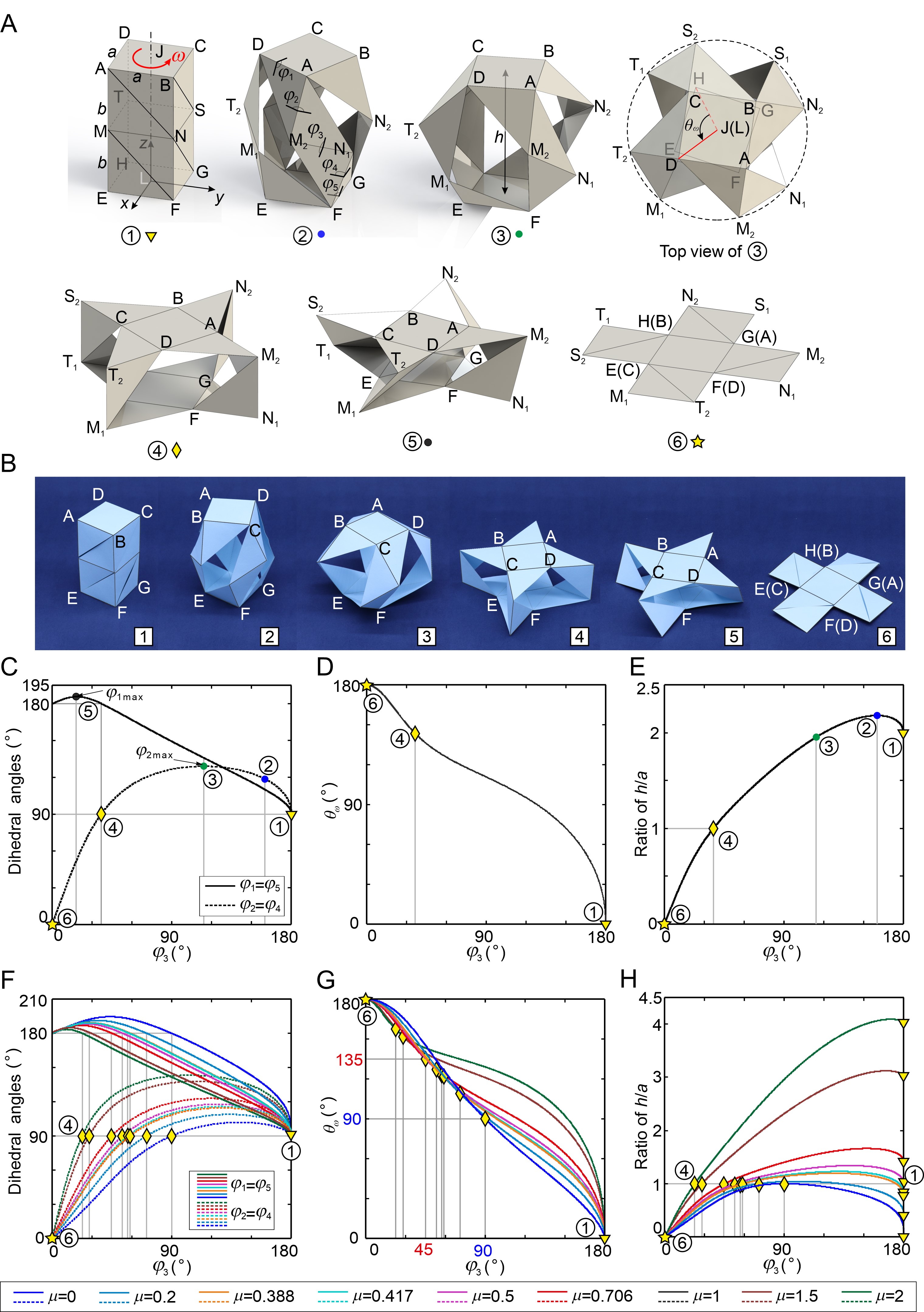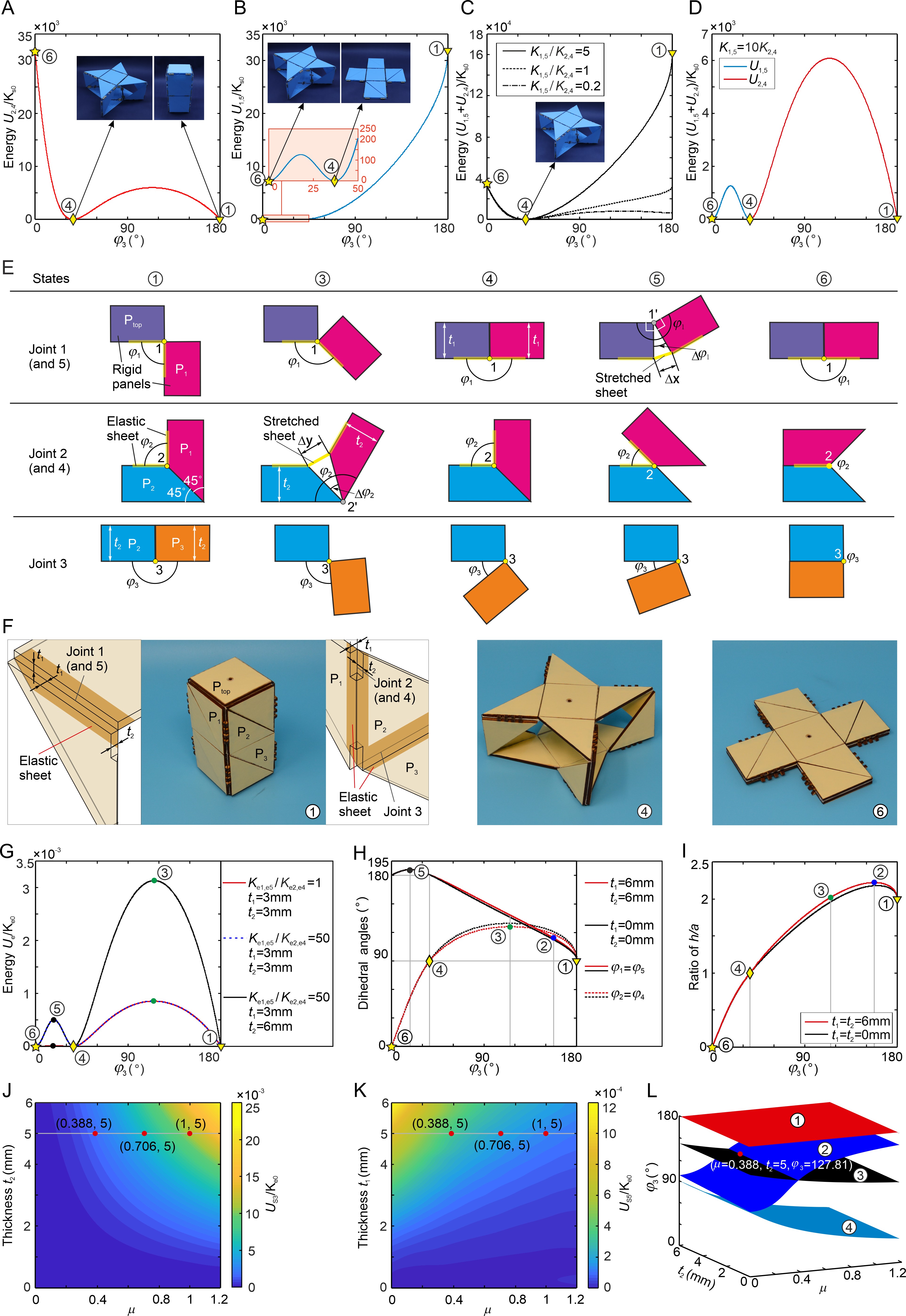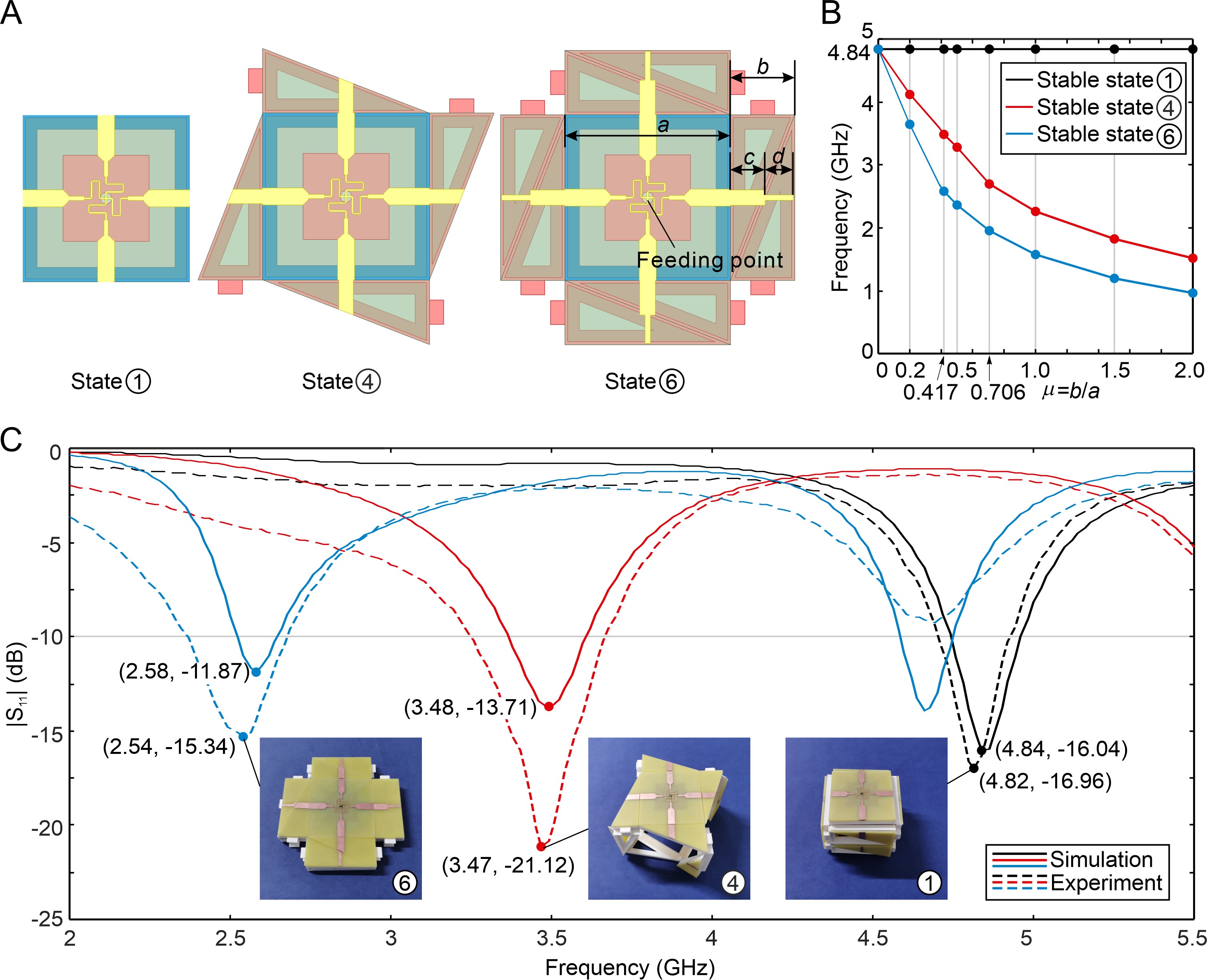Research
Team
Publications
News
|
New Publication: Kirigami-based Metastructures with Programmable Multistability
From: Date: 2022-03-28 Recently, the team of Professor Yan Chen from the school of mechanical engineering of Tianjin University, in cooperation with the team of Professor Kaixue Ma from the school of microelectronics of Tianjin University and Professor Zhong You from the University of Oxford, designed a novel type of tristable unit and a series of programmable multistable metastructures based on kirigami by designing a set of new elastic hinges with specific effective motion range. The tristable unit is successfully applied to the design of a frequency reconfigurable antenna to realize 5G three frequency band communication. The results were published online in Proceedings of the National Academy of Sciences of the United States of America on March 7, 2022. The corresponding author of the paper is Professor Chen Yan of Tianjin University. The first author is Dr. Xiao Zhang of Tianjin University. Professor Kaixue Ma, Professor Yu Luo, Associate Professor Jiayao Ma, Ph.D. student Mengyue Li, master student Xiaoyan Wang and Professor Zhong You from the University of Oxford also made important contributions to this paper. The research was supported by the National Natural Science Foundation of China and the Tencent Foundation. Figure 1. Geometry and kinematics of the foldable kirigami cuboid. Then, according to the geometric angle characteristics of the foldable kirigami structure in three typical states, a group of new elastic hinges only effective in a specific motion range is created which integrates the elastic sheets and switchable hinge axes inspired by the kinematic behaviours of kirigami cuboid with thick facets. This leads that the torsional springs at creases 2 and 4 are only activated between configurations ① and ④ whereas torsional springs at creases 1 and 5 are only triggered between ④ and ⑥. Hence, tristable structures with zero-energy stable states ①, ④ and ⑥ are constructed. Based on the deformation principle of the hinge, the energy model of the stable state structure is established. It is analyzed and determined that the programming design of the energy barriers of the transformation process between the stable states can be realized by designing the geometric parameters of the structure and the material properties of the elastic sheets, as shown in Figure 2. Figure 2. The construction of the tristable structure and the programmability of the energy barriers. Then, the stable-state transformation laws of tristable structures with different geometric parameters under torsional and tensile loading modes are analyzed, and the theoretical results are verified by horizontal tensile experiments. Further, taking the tristable structure as the basic unit, a variety of multistable superstructures with the same rotation direction, different rotation direction, the same geometric parameters, different geometric parameters, and a different number of units are designed in series. Through the combination of theory and experiment, it is proved that the number of stable states, the combination of stable states and the transformation sequence of stable states can be programmed through the number of units, design parameters, loading mode and the loading sequence. Through the detailed design of geometric parameters of units, stiffness of elastic hinges and loading mode, a metastructure with 12 programmed stable states is constructed, which is composed of three tristable units in series, as shown in Figure 3. Figure 3. An assembly of three tristable units with multiple stable states. Finally, the team carried out the application research of tristable structure on frequency reconfigurable antenna and designed a frequency reconfigurable antenna that can realize 5G three-band communication through parameter analysis method. The working frequencies of its three stable states ①, ④ and ⑥ are concentrated at 4.84GHz, 3.48GHz and 2.58GHz, respectively. The validity of the simulation results is verified by experiments, and the feasibility of the application of tristable structure in frequency reconfigurable antenna is proved, as shown in Figure 4. Figure 4. Frequency reconfigurable antenna. In this study, kirigami is used and design a set of novel elastic joints, and a zero-energy tristable unit is constructed. A series of programmable multistable metastructures are designed based on this unit. This research will provide new units and ways for the design of multistable structures and is conducive to the development of frequency reconfigurable antennas, tunable metamaterials, deployable structures, reconfigurable robots and so on.
Zhang X, Ma J, Li M, You Z, Wang X, Luo Y, Ma K, Chen Y*. Kirigami-based metastructures with programmable multistability, Proceedings of National Academy of Sciences of the United States of America, 2022, 119(11): e2117649119. |



